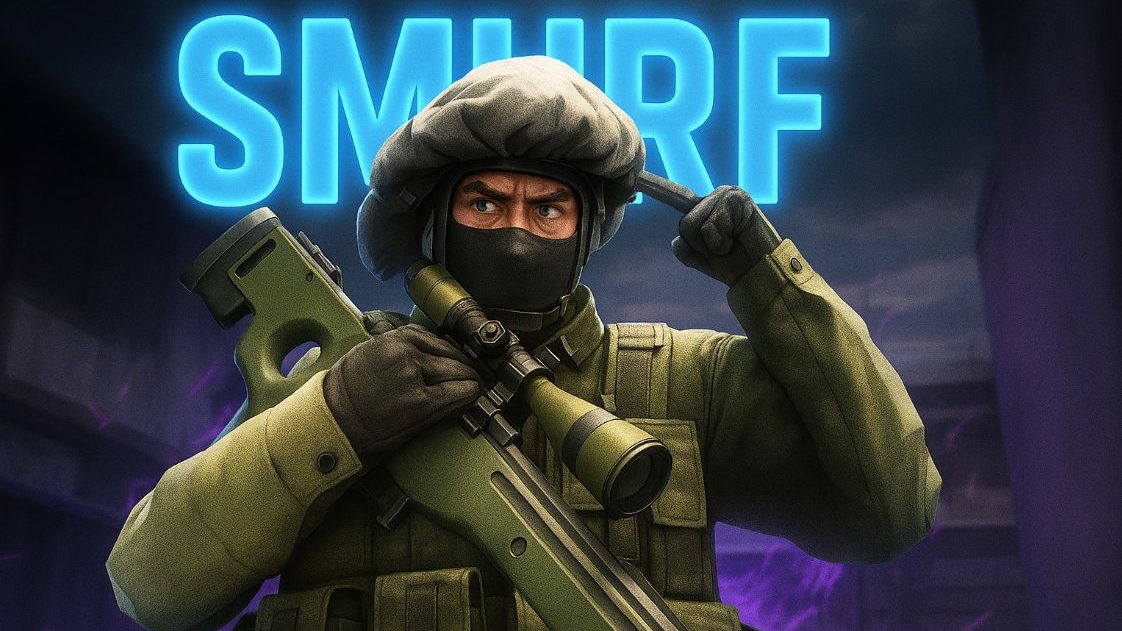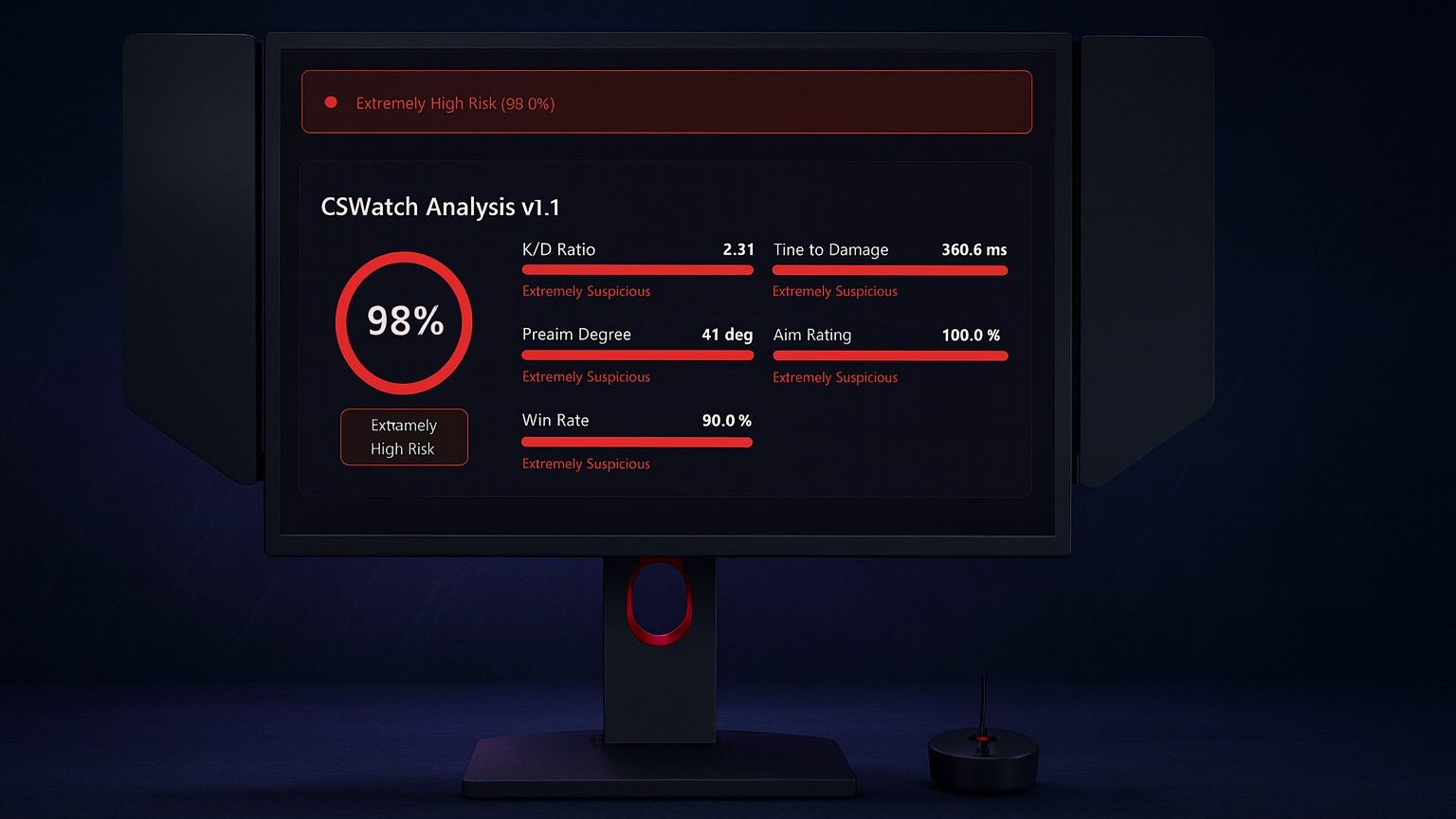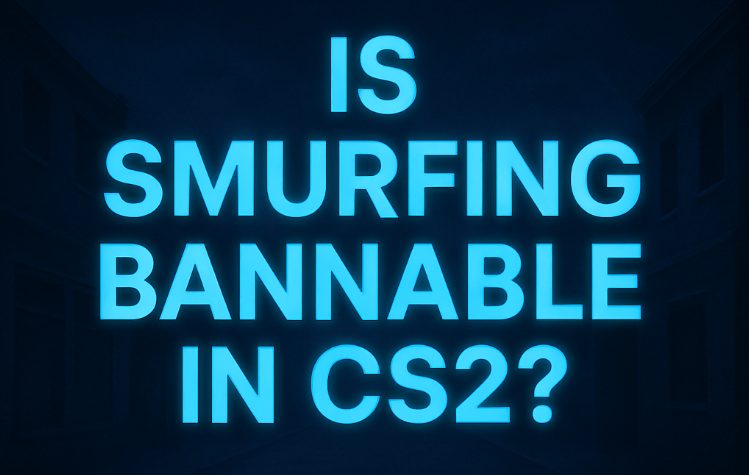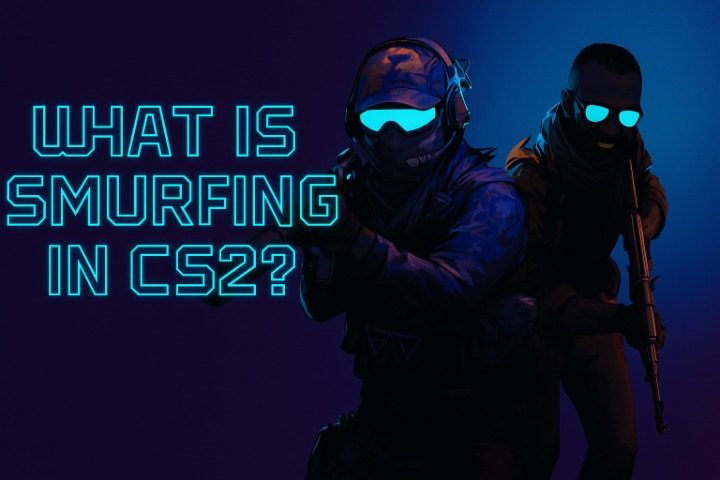Smurfing in Counter-Strike 2 (CS2) is a major problem that continues to frustrate both new and experienced players. You’ll encounter this issue sooner or later, whether you play CS2, Dota 2, League of Legends, Overwatch, or any other competitive game.
But what exactly is smurfing in CS2, and why does it happen? In this guide, we’ll explain everything about the CS2 smurfing phenomenon, how it affects matchmaking, and what you can do to recognize and avoid it in 2025.
Contents
- 1 What Is Smurfing in CS2?
- 2 Why Players Create CS2 Smurf Accounts (2025 Reasons Explained)
- 3 1. Account Selling and CS2 Boosting
- 4 2. Playing With Lower-Ranked Friends
- 5 3. Ego Boosting and Easy Wins
- 6 4. Faster Matchmaking
- 7 How to Spot a Smurf in CS2
- 8 How Smurfing Affects CS2 Matchmaking and Trust Factor
- 9 Is Smurfing Bannable in CS2? Valve’s Anti-Smurfing Policy Explained
- 10 How to Avoid CS2 Smurfing and Matchmaking Abuse
- 11 Where the Term “Smurfing” Comes From
- 12 Closing Thoughts
- 13 FAQs — CS2 Smurfing (2025)
What Is Smurfing in CS2?
Smurfing in CS2 occurs when a highly skilled player creates a new or secondary account to play against lower-ranked opponents. In the CS2 matchmaking system, this often means a Global Elite or high-rated player competing in Silver or Gold lobbies.
This leads to unfair and unbalanced matches because the smurf’s real skill level is much higher than everyone else’s. Some players smurf to practice new weapons or strategies, while others do it to troll or boost their ego — but either way, it ruins fair competition.
Why Players Create CS2 Smurf Accounts (2025 Reasons Explained)

There are several reasons why people create CS2 smurf accounts, even though it’s against Valve’s online conduct rules.
1. Account Selling and CS2 Boosting
Many players create smurf accounts to quickly climb ranks and sell them for profit. CS2 boosting services use smurf accounts to reach high ranks fast and then sell them to others who want to skip the grind.
2. Playing With Lower-Ranked Friends
CS2’s competitive matchmaking is strict about rank difference in parties. Some players create smurf accounts so they can play with friends who are still learning or ranked much lower.
3. Ego Boosting and Easy Wins
Some players just want to dominate low-rank matches for fun or to feel superior. This is one of the most toxic forms of CS2 smurfing and contributes to poor player retention.
4. Faster Matchmaking
High-ranked players often face long queue times. By using a CS2 smurf account, they can find games faster — though at the expense of fair matchmaking.
How to Spot a Smurf in CS2

Spotting smurfs in CS2 isn’t always easy, but there are clear red flags you can look out for:
- Exceptionally High Kill Counts: Consistent 30+ frag games in Silver/Gold are a big indicator.
- Perfect Crosshair Placement: Smurfs often show precise pre-aiming and flick shots.
- Aggressive Playstyle: Confident entry fragging and near-flawless map control at low ranks are suspicious signs.
- High Headshot Ratio: Players with over 60–70% headshots in low ranks are likely smurfing or cheating.
Extra Checks:
- Check their match history — if they’re dominating every match with ease, they’re probably a smurf.
- Review their Steam profile — few hours played, private stats, or a brand-new account are major red flags.
Once built by the CS2 community to fight back against unfair play, CSWatch became a trusted hub where players could track suspicious accounts and uncover cheaters or smurfs through shared match data and community reports.
How Smurfing Affects CS2 Matchmaking and Trust Factor
CS2 smurfing directly damages the game’s ranked ladder and matchmaking system. Here’s how:
- Negative Impact on New Players: Beginners lose motivation when they constantly face smurfs with advanced aim, movement, and game sense. Many stop playing altogether.
- Match Imbalance: The CS2 rating system is designed for fairness, but smurfs ruin this by introducing disproportionate skill gaps.
- Boosting and Exploits: Smurf accounts are often used to boost other players, undermining the integrity of CS2 ranks.
- Developer Burden: Valve has to invest heavily in anti-smurfing detection and account moderation, increasing operational costs.
- Lower Player Retention: Consistent losses against smurfs discourage newcomers and reduce the long-term health of the game.
Is Smurfing Bannable in CS2? Valve’s Anti-Smurfing Policy Explained

Yes — smurfing in CS2 is bannable under Valve’s Online Conduct and Trust Factor policy. It’s treated similarly to CS2 matchmaking abuse, and repeated offenders risk a VAC ban or reduced Trust Factor rating.
Valve continues to expand its anti-smurfing in CS2 measures. In 2025, new systems are expected to use machine learning to detect account-level inconsistencies — making it harder for smurfs to hide behind new profiles.
How to Avoid CS2 Smurfing and Matchmaking Abuse
While you can’t eliminate smurfs entirely, these strategies can help you minimize encounters:
- Play During Peak Hours – The more active players online, the more balanced your matchmaking pool.
- Use FACEIT or Third-Party Services – Platforms like FACEIT provide better CS2 matchmaking control and anti-smurf systems.
Report Smurfs in CS2 – Always use the in-game report system if you suspect smurfing behavior.
Where the Term “Smurfing” Comes From
The term “smurfing” has been around since the 1990s, long before CS2 ranks existed. It originated in Warcraft II: Tides of Darkness, when two skilled players created alternate accounts named “PapaSmurf” and “Smurfette” to play anonymously against weaker opponents.
The name stuck — and decades later, it became part of the gaming vocabulary for any player who hides their true skill level using a different account.
Closing Thoughts
CS2 smurfing remains one of the most damaging aspects of competitive play. While you can’t avoid every smurf, understanding how to recognize and report them helps maintain a fairer experience.
With Valve’s continued efforts and the anti-smurfing system 2025 update, there’s hope that matchmaking integrity will improve. Until then, focus on your gameplay, report unfair behavior, and help build a better CS2 competitive scene.
FAQs — CS2 Smurfing (2025)
What is smurfing in CS2?
Smurfing in CS2 is when an experienced player uses a low-ranked account to face weaker opponents. It disrupts fair matchmaking and often results in one-sided games.
Why do people smurf in CS2?
Players smurf in CS2 for faster queues, to play with friends, to boost their accounts, or simply to win easier matches. Some also sell smurf accounts for profit.
Is smurfing and cheating in CS2 the same thing?
No. Cheating involves using external software, while smurfing means manipulating the ranked system. However, both are punishable under Valve’s Trust Factor policy.
Can you get banned for smurfing in CS2?
Yes. Valve considers smurfing a form of matchmaking abuse. Repeat offenders can receive Trust Factor penalties or even a VAC ban in severe cases.
How can I report smurfs in CS2?
Use the in-game report system after your match. Select “Matchmaking abuse” or “unfair play.” Valve regularly reviews reports to improve the anti-smurfing algorithm.



